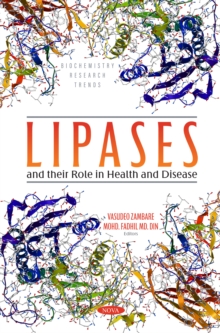
Biomolecules and Corrosion PDF
by Santosh Kumar Karn
Part of the Biochemistry Research Trends series
Description
Corrosion causes great losses to the economy every year.
Microbial-influenced corrosion (MIC) is important for maritime, chemical engineering, and bioprocess engineering industries.
Presently no environmentally friendly technology has been available to minimize the economic loss of biocorrosion.
Currently available anti-biocorrosion technology depends heavily on chemical methods to regulate biofilm formation which has a negative impact on the environment.
Therefore, it is essential to know the fundamentals of the roles of biomolecules within the whole process to develop detailed research capabilities and potential control and management strategies.
This book targets the roles of EPS, proteins, lipids, DNA, and different metabolites currently known to be involved in the corrosion processes.
The potential roles of EPS, proteins, lipids and enzymes are still poorly understood.
There are still collective issues that need to be addressed, including the importance of the microbial role in MIC.
More specifically, there exists a need to understand the impact of enzyme activities inside the biofilm matrix on the dynamics of corrosion reactions.
Also, there is the involvement of metals or organometallic complexes in electron transfer and from chemically and morphologically diverse metallic surface films to ultimate electron acceptors.
Information
-
Download - Immediately Available
- Format:PDF
- Publisher:Nova Science Publishers, Inc.
- Publication Date:25/01/2023
- Category:
- ISBN:9798886975314
Information
-
Download - Immediately Available
- Format:PDF
- Publisher:Nova Science Publishers, Inc.
- Publication Date:25/01/2023
- Category:
- ISBN:9798886975314










